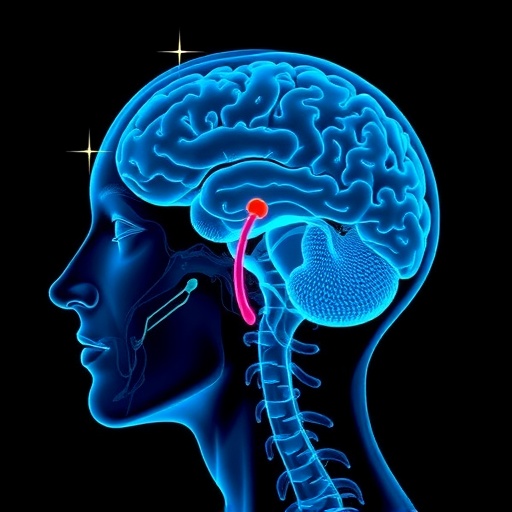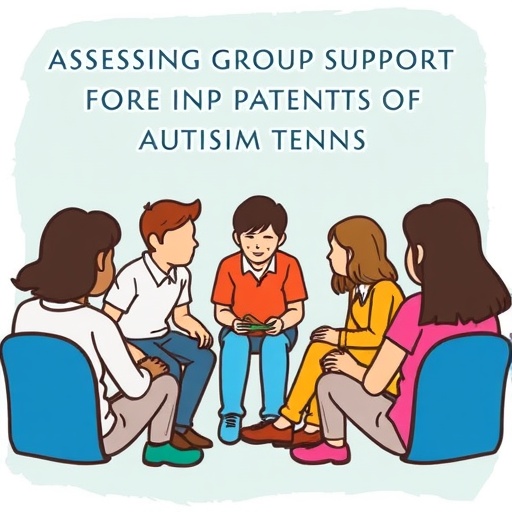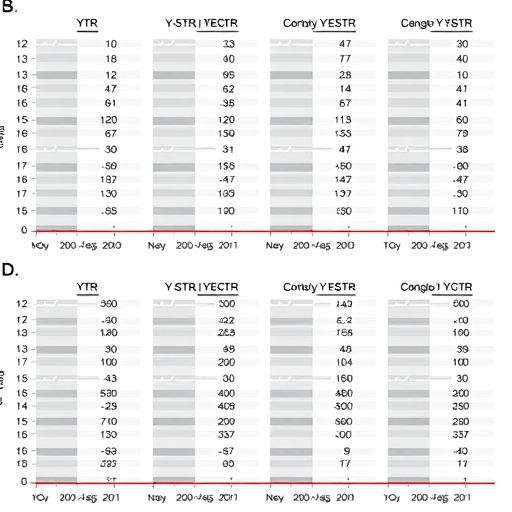
A groundbreaking study published in npj Parkinson’s Disease has unveiled new insights into how varying frequencies of subthalamic deep brain stimulation (DBS) affect speech and voice impairments in Parkinson’s disease (PD). The randomized trial, led by researchers Zeng, Yang, Lin, and colleagues, explored the nuanced effects of high, low, and asymmetric frequency stimulation patterns on patients’ vocal and speech functions, shining fresh light on potential ways to optimize DBS therapy beyond motor symptom management.
For decades, DBS targeting the subthalamic nucleus (STN) has been a mainstay for managing the cardinal motor symptoms of Parkinson’s disease, including tremor, rigidity, and bradykinesia. However, one of the most elusive challenges has been the frequent deterioration of speech intelligibility and voice quality following DBS implantation. These adverse effects on communication profoundly impact patients’ quality of life, yet remain partly unpredictable and understudied in relation to the stimulation parameters themselves.
The researchers designed a meticulous randomized crossover trial involving patients diagnosed with idiopathic Parkinson’s disease who had been implanted with STN-DBS hardware. The trial compared three different stimulation paradigms: conventional high-frequency stimulation (HFS), low-frequency stimulation (LFS), and an innovative asymmetric frequency stimulation (AFS) approach. The AFS paradigm involved differential stimulation where one hemisphere received high frequency and the other low frequency, hypothesized to potentially reduce side effects while retaining therapeutic efficacy.
.adsslot_gE5avyMH1u{width:728px !important;height:90px !important;}
@media(max-width:1199px){ .adsslot_gE5avyMH1u{width:468px !important;height:60px !important;}
}
@media(max-width:767px){ .adsslot_gE5avyMH1u{width:320px !important;height:50px !important;}
}
ADVERTISEMENT
Speech and voice outcomes were rigorously assessed using a combination of acoustic measures, perceptual ratings by speech-language pathologists, and patient-reported communication difficulties. Objective acoustic metrics analyzed included vocal intensity, fundamental frequency stability, articulation rate, and harmonics-to-noise ratios — all critical parameters that reflect vocal fold vibration control and articulatory precision affected in PD.
The results revealed that high-frequency stimulation, while effective in ameliorating motor symptoms, consistently correlated with deterioration in speech intelligibility and increased voice strain. Patients exhibited reduced vocal loudness, increased voice instability, and higher reports of speech effort difficulty under HFS conditions. These findings align with prior knowledge linking typical DBS settings with speech side effects but provide stronger causal evidence thanks to the randomized crossover design.
Conversely, low-frequency stimulation showed promising partial reversal of these adverse vocal effects. Under LFS, patients demonstrated improved vocal loudness and steadier pitch control, with perceptual ratings indicating clearer speech production. However, the trade-off involved a partial reduction in motor symptom control, reflecting the complex balance clinicians face when tuning DBS parameters to target both motor and non-motor outcomes.
Most intriguingly, the asymmetric frequency stimulation approach yielded a unique constellation of results. Patients receiving AFS experienced a notable preservation of motor benefits combined with comparatively better speech outcomes than HFS alone. Acoustic measurements highlighted improved voice stability and less articulatory degradation, suggesting that hemispheric frequency differentiation might allow more tailored modulation of basal ganglia circuits underlying motor and speech functions.
The underlying neurophysiological mechanisms hinted at by this study suggest that the subthalamic nucleus engages in complex bilateral networks, with distinct hemispheric influences on motor and speech motor control. By adjusting stimulation asymmetrically, it may be possible to selectively target pathways involved in limb motor function while sparing those circuits critical for fine vocal motor control. Future studies employing neuroimaging or electrophysiological recordings could elucidate these pathways further.
This investigation heralds potential paradigm shifts for both clinical and research approaches to Parkinson’s disease treatment. Traditionally, DBS programming has relied heavily on empirical adjustment of high-frequency parameters mainly focused on motor improvement. However, the present findings demonstrate that incorporating frequency variation strategies could enable clinicians to tailor therapies that preserve communication abilities, which are vital for social engagement and emotional well-being.
Moreover, the methodological rigor of the trial — particularly its randomized crossover design — emphasizes the importance of systematically evaluating speech and voice features as primary outcomes in DBS studies rather than peripheral observations. This could prompt regulatory bodies and research consortia to demand comprehensive multi-domain outcome assessments in neuromodulation trials.
The ramifications go beyond the clinical realm, raising fascinating questions about the basal ganglia’s role in integrating motor and cognitive-linguistic functions. Understanding how DBS frequency tuning influences these overlapping neural circuits could spur new hybrid therapeutic strategies combining neurostimulation with speech therapy, neurofeedback, or pharmacological agents fine-tuned to individual neural dynamics.
It also opens the door to more personalized treatment approaches, potentially exploiting patient-specific neural architecture and symptom phenotypes. Machine-learning algorithms applied to patient speech and motor data streams might eventually predict the optimal stimulation frequency combinations in real time. Such closed-loop, adaptive DBS systems could revolutionize Parkinson’s disease symptom management by dynamically balancing motor and non-motor effects.
On a practical clinical level, speech therapists and neurologists should take note of these findings and advocate for integrated DBS programming sessions involving multidisciplinary teams. Patient monitoring protocols could incorporate regular comprehensive speech evaluations post-implantation to detect early signs of vocal deterioration and calibrate stimulation accordingly.
Importantly, the study also warns against the wholesale adoption of low-frequency stimulation without consideration of motor symptom resurgence risks. The asymmetric stimulation approach appears to offer a middle ground, preserving motor control while mitigating speech impairment, though long-term follow-up and larger patient cohorts will be required to validate its safety and efficacy fully.
Beyond PD, the concept that differential frequency neuromodulation can modulate speech outcomes may inspire exploration in other movement and speech disorders where DBS or similar techniques are applied, such as dystonia or essential tremor. Applying these insights broadly could transform neuromodulation from blunt force interventions into precise, brain circuit–responsive therapies.
In conclusion, the work by Zeng and colleagues represents a landmark step toward harmonizing DBS treatment goals for Parkinson’s disease patients. By systematically dissecting how high, low, and asymmetric subthalamic stimulation frequencies impact speech and voice, the study provides a sophisticated framework for optimizing therapy that equally values communicative abilities alongside motor symptom relief. These findings ignite hope for more holistic, patient-centered neuromodulation strategies in the near future.
Subject of Research: Effects of subthalamic nucleus deep brain stimulation frequency parameters on speech and voice functions in Parkinson’s disease.
Article Title: Effect of high, low, and asymmetric frequency subthalamic stimulation on speech and voice in Parkinson’s disease: a randomized trial.
Article References:
Zeng, Z., Yang, M., Lin, Z. et al. Effect of high, low, and asymmetric frequency subthalamic stimulation on speech and voice in Parkinson’s disease: a randomized trial. npj Parkinsons Dis. 11, 223 (2025). https://doi.org/10.1038/s41531-025-01090-0
Image Credits: AI Generated
Tags: asymmetric frequency stimulationdeep brain stimulation researcheffects of frequency on speechhigh-frequency vs low-frequency stimulationoptimizing DBS for communicationParkinson’s disease speech therapyquality of life and communicationrandomized trial in Parkinson’sspeech intelligibility in PDsubthalamic deep brain stimulationsubthalamic nucleus and voice qualityvoice impairments in Parkinson’s





